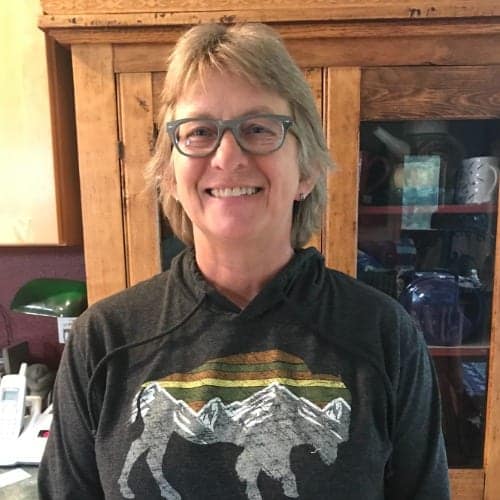
Carrie shared her story in September of 2020.
Monica was diagnosed with stage 4 pancreatic cancer in June 2019 and passed away on February 15, 2020. She was only 55 years old and a high-level athlete, who ran half marathons and skied the Birkebeiner in 2018 and 2019. Her agony was horrible to witness. There’s nothing more pivotal in supporting medical aid in dying than experiencing the unnecessary suffering of a loved one in their last days.
Immediately, Monica and I grasped at any treatment option that would potentially afford us more time together. We were fortunate that Monica was originally from Rochester, MN and her father was still living there. Monica’s sister also lived there so the family support was incredibly helpful. We were able to stay with them and it made the difference of being able to receive treatments at the Mayo Clinic. Monica tried chemo and had good results at her first CT scan, but cancer tends to find a way to keep itself alive. By October, things were worse and we were onto another chemo treatment. In January, Monica decided she could not continue as planned.
Chemo was affecting her already severely limited quality of life experienced by the undeniable advancement of her cancer. At the end of January, Monica enrolled in hospice. The focus became on minimizing her suffering, which she had outlined in her living will and was of the utmost importance along with quality of life. She had already been on morphine since late November, and her pain was continually increasing and required greater attention.
Monica feared struggling with and dying in pain. She had already suffered for months with a great deal of pain, but we managed to stay relatively ahead of it and keep it manageable with morphine. Her last two weeks were excruciating. Hospice was unable to keep up with the unmanageable changes that occurred in her last days. The last two weeks of life did not allow for any of Monica’s wishes to be honored.
Hospice couldn’t stay ahead of Monica’s pain and other agonizing symptoms, even with her dilaudid pump. The pain kept advancing quickly, and I would have to contact hospice at different times throughout the 24-hour period, sometimes at 3am, to request an increase in her prescribed dosage of dilaudid. Monica was in absolute misery. She kept trying to get relief from the pain, but her cognitive abilities were suffering as a result. She suffered extreme restlessness and hospice was concerned that her metastasized liver could not process the quantity of pain and anxiety medicine Monica required.
Eventually, hospice induced a medical coma to ease Monica’s symptoms and pain.
Watching the love of my life suffer was horrible. The pain and other agonizing symptoms were extremely challenging for her. Having loved ones gather to say goodbye would have given honor to who Monica was. She was a kind person with a big heart, and she was a beloved middle school teacher. Many of her colleagues and previous students came to her services to remember the positive impact she had made on them as a teacher, a cross country track coach, and an LGBTQ advocate for students.
I wish Monica could have been afforded the opportunity to decide when enough was enough. If we had lived in Maine, Oregon, Vermont, or one of many other states that trust their residents to decide for themselves if medical aid in dying is right for them, we could have had the ability to say goodbye and been more intentional in our narrative. Medical aid in dying would have provided Monica comfort in knowing she could have control over the inevitable.
Read More:
Minnesota Women’s Press – Why I Support Death with Dignity (February 5, 2021)
Mail contributions directly to:
Compassion & Choices Gift Processing Center
PO Box 485
Etna, NH 03750
Compassion & Choices is a 501 C3 organization. Federal tax number: 84-1328829